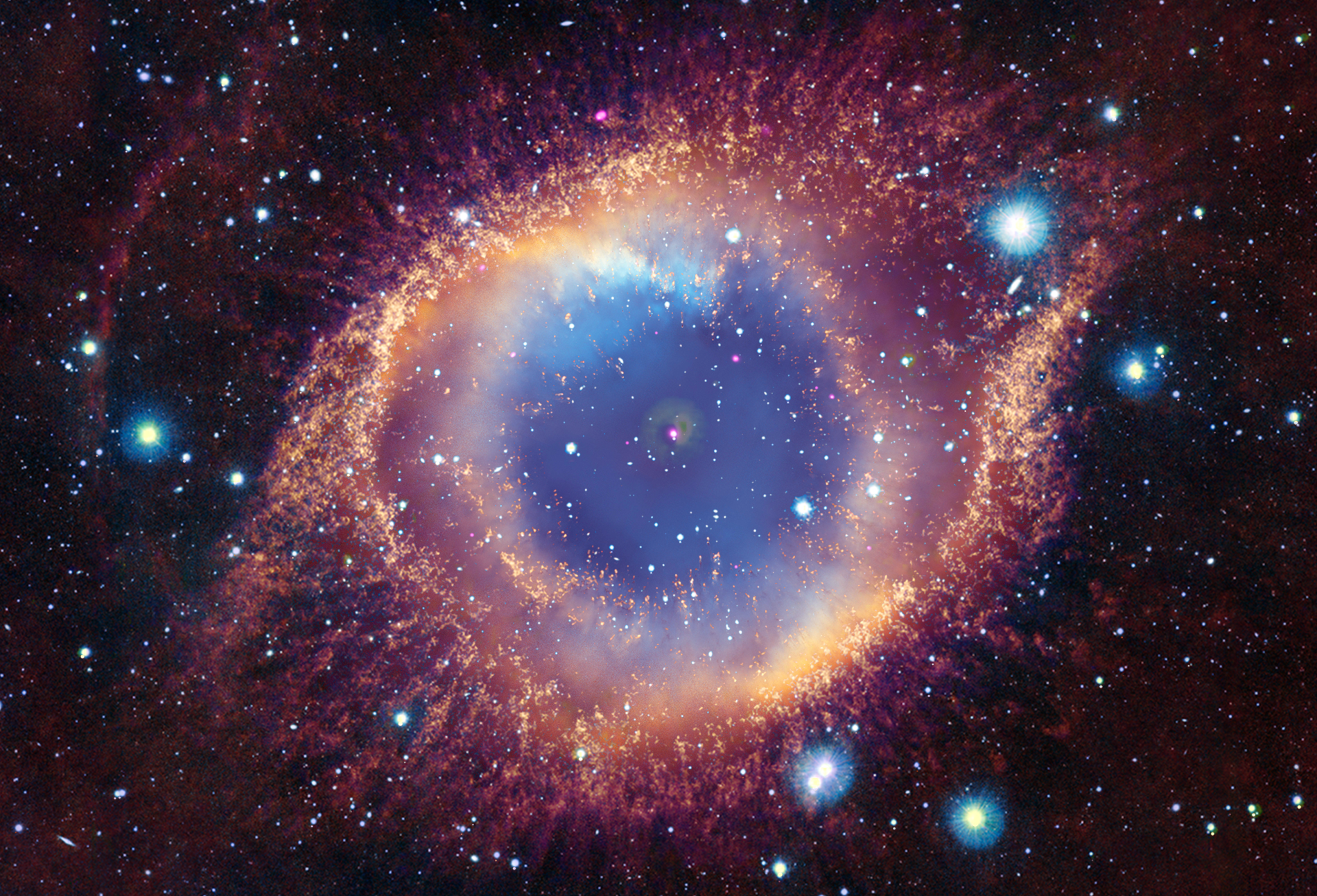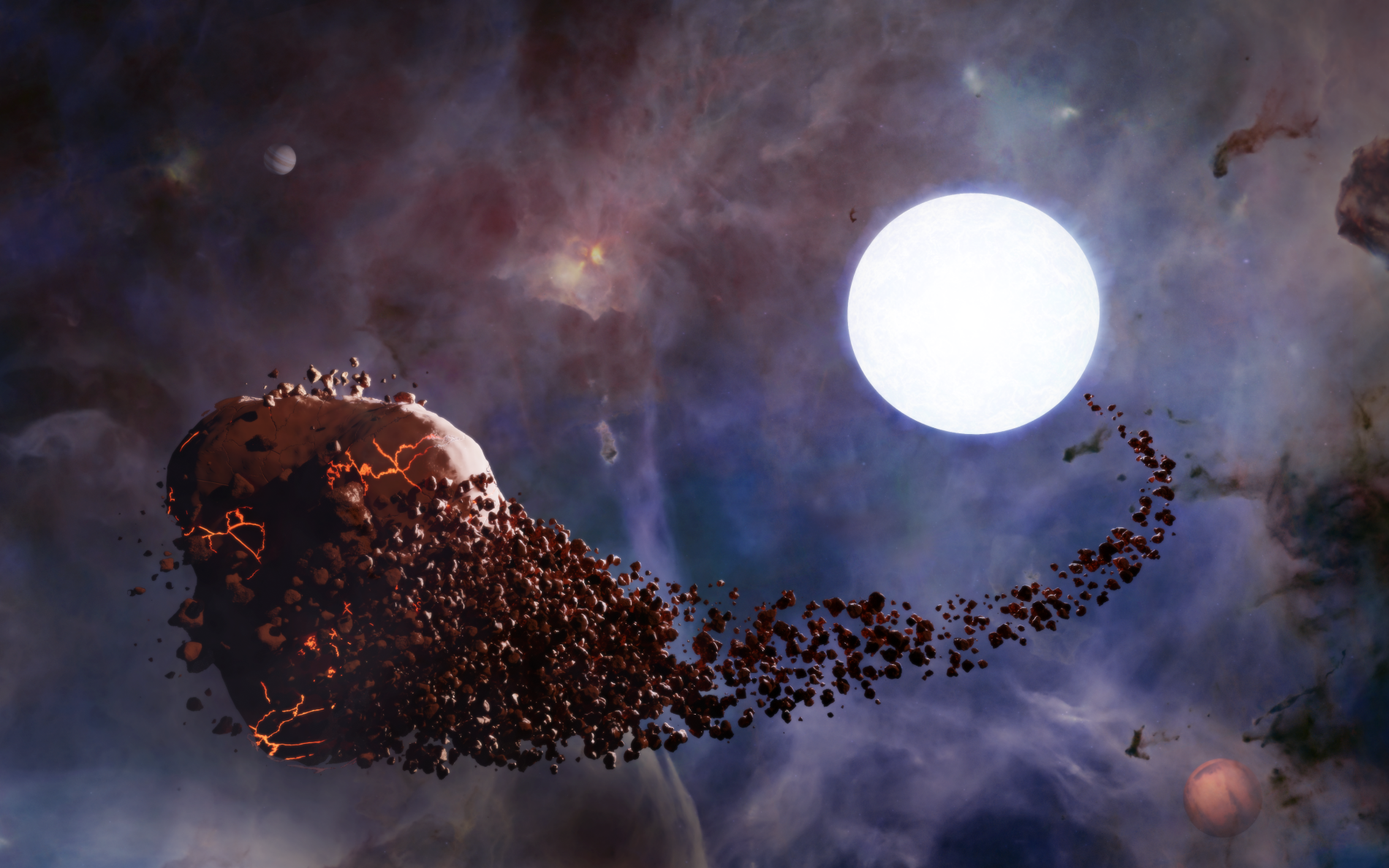Planet's destruction may explain mysterious X-Ray signal emitted by a dying star
After decades of tracking an enigmatic X-ray signal from a star in its final life stages, this study, co-led by the Instituto de Astrofísica de Andalucía, may have finally uncovered its origin: the destruction of a nearby planet
Although the Sun is currently about 4.6 billion years old and is expected to take another 5 billion years before exhausting its hydrogen and evolving into a red giant, this study explores potential fates of the planets in the solar system
As a star like the Sun approaches the end of its life, its destiny is marked by an unstoppable transformation process. After exhausting its fuel, these stars—known as red giants in their final stages—expel their outer layers into space, giving rise to a planetary nebula. At the center remains a white dwarf, the dense and hot stellar remnant, which emits ultraviolet radiation. This radiation illuminates and ionizes the surrounding gas, creating the bright structures that characterize these fascinating cosmic formations.
Since the 1980s, various X-ray missions have detected an unusual signal from the central star of the Helix Nebula, one of the closest planetary nebulae to Earth. The Instituto de Astrofísica de Andalucía (IAA-CSIC) is part of a study, recently published in the journal Monthly Notices of the Royal Astronomical Society, that may have solved the enigma of this signal. "In this work, we interpret the hard X-ray emission in a white dwarf as the result of accretion of planetary material," says Martín A. Guerrero, IAA-CSIC researcher and second author of the study. "We have finally found a connection between the hard X-ray emission of a white dwarf and the processes of destruction or survival of a planetary system around it."

Composite image with X-rays from Chandra (magenta), optical light data from Hubble (orange, light blue), infrared data from ESO (gold, dark blue), and ultraviolet data from GALEX (purple) of the Helix Nebula. Credit: X-ray: NASA/CXC/SAO/Univ Mexico/S. Estrada-Dorado et al.; Ultraviolet: NASA/JPL; Optical: NASA/ESA/STScI (M. Meixner)/NRAO (T.A. Rector); Infrared: ESO/VISTA/J. Emerson; Image Processing: NASA/CXC/SAO/K. Arcand
INDICATIONS OF A PLANET IN DESTRUCTION?
In previous decades, the Einstein and ROSAT telescopes detected highly energetic X-rays from the white dwarf at the center of the Helix Nebula, designated WD 2226-210 and located only 650 light-years from Earth. White dwarfs like WD 2226-210 do not usually emit energetic X-rays.
Now, thanks to powerful X-ray observatories, NASA's Chandra and ESA's XMM-Newton, the scientific community has achieved a much clearer view of this decades-long enigma.
"We think this X-ray signal could be associated with planetary remnants being drawn toward the white dwarf, as if it were a final message sent by a planet that was destroyed by the white dwarf in the Helix Nebula," explains Sandino Estrada-Dorado, lead author of the study and researcher at the National Autonomous University of Mexico. "We may have finally solved a mystery that has lasted more than 40 years."

The artist’s illustration shows a planet (left) that has approached too close to a white dwarf (right) and is being torn apart by tidal forces from the star. The white dwarf is in the center of a planetary nebula depicted by the blue gas in the background. Credit: NASA/CXC/SAO/M. Weiss
Previously, it was determined that a Neptune-sized planet is in a very close orbit, completing a revolution in less than three days, around the white dwarf. Researchers of this latest study conclude that a Jupiter-like planet could have existed even closer to the star. This planet might have initially been in a much farther orbit but ended up migrating inward due to gravitational interactions with other planets. Upon approaching close enough to the white dwarf, its intense gravity would have eventually torn the planet apart partially or completely.
"The mysterious signal we've been observing could be due to the remnants of the destroyed planet falling onto the white dwarf's surface and heating up to emit X-rays," says Martín A. Guerrero (IAA-CSIC). "If confirmed, it would be the first time the destruction of a planet in a planetary nebula has been observed."
The research indicates that the white dwarf's X-ray signal has remained approximately constant in brightness between 1992, 1999, and 2002, with observations from ROSAT, Chandra, and XMM-Newton, respectively. However, the data suggest a subtle and regular variation in the signal every 2.9 hours, which would indicate the presence of remnants of an extremely close planet to the white dwarf.
The authors have also considered the possibility that, instead of a planet, it was the destruction of a low-mass star. However, tidal effects depend on the size of the object: the gravity difference between the front and back of the object is greater in larger bodies. The evidence favors the hypothesis of a Jupiter-like planet, as its size is large enough for the white dwarf's gravity to tear it apart, while a low-mass star would be too small to experience this effect.
WD 2226-210 exhibits similarities in its X-ray behavior with two other white dwarfs that are not within planetary nebulae. One of them could be absorbing material from a companion planet, albeit in a more gradual manner without rapidly destroying it. The other white dwarf appears to be attracting remnants of a planet onto its surface. These three cases could define a new class of variable or changing objects.
"It's important to find more systems like this, as they can teach us about the survival or destruction of planets around Sun-like stars as they age," notes Jesús A. Toalá, co-author of the study and researcher at the National Autonomous University of Mexico. "This work also explores the fate of planetary material and its possible use for the formation of a second generation of planets," concludes Martín A. Guerrero (IAA-CSIC).
- Accretion onto WD 2226-210, the central star of the Helix Nebula | Monthly Notices of the Royal Astronomical Society | Oxford Academic
- Estrada-Dorado, S., Guerrero, M. A., et al. 2025, MNRAS, Vol. 536, 2484
- Martín A.Guerrero - mar@iaa.es
- Instituto de Astrofísica de Andalucía (IAA-CSIC)
- Unidad de Divulgación y Comunicación
- Amanda López – alm@iaa.es
- Emilio García – garcia@iaa.es - 649 407 445 (vía whatssap)
- Celia Navas - navas@iaa.es
- https://www.iaa.csic.es
- https://divulgacion.iaa.csic.es

